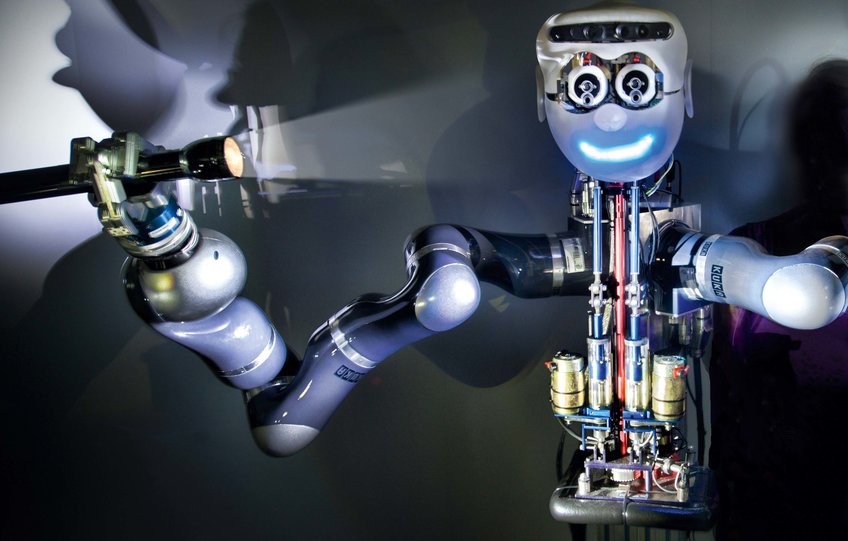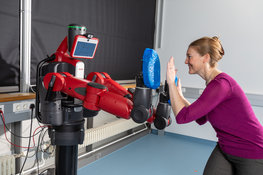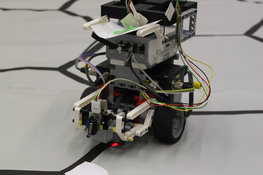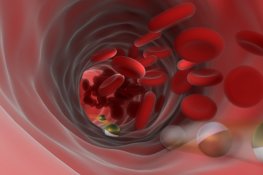Robotics
They should become versatile helpers for humans: Robots could one day rescue injured people from buildings in danger of collapsing completely independently or help us with housework when it is difficult for us to bend down. As autonomous vehicles, they would chauffeur us independently to a destination. And doctors could send tiny drug transporters or surgical assistants into a patient's body to treat specific foci of disease. Researchers at various Max Planck Institutes are working on making robots autonomous and more flexible in their use.
Today, robots are capable of much less than science fiction authors ascribe to them. Although many toys call themselves robots, they can hardly fulfil the claim. Practically useful robots serve the manufacturing industry as reliable but also stubborn and not very flexible helpers. Similarly dutiful, but also dull, are the devices that independently mow the lawn or roll through a flat vacuuming. Although some robots, such as Sophia, developed by a Hong Kong company, now look quite similar to humans and can even imitate human behaviour, their ability to move and their artificial intelligence are not very good. Even when walking, most machine creatures lose their footing on uneven terrain as quickly as small children who are just learning to walk. Even when dealing with humans, robots do not always react as flexibly as would be necessary for safe contact with humans. Not to mention the fact that there are lawnmower and hoover robots, but none yet that can do both and perhaps also independently carry a dust-filled bag to the dustbin or even replace blunt blades for the next grass cut. Even industrial robots today only manage certain tasks for which they have been programmed - they are hopelessly overwhelmed by deviations from their routine until their software is rewritten accordingly.
Many publications by Max Planck scientists in 2022 were of great social relevance or met with a great media response. We have selected 12 articles to present you with an overview of some noteworthy research of the year
more
In order to support people in therapy or in everyday life in the future, machines will have to be capable of feeling and gently touching their human counterparts. Katherine J. Kuchenbecker and her team at the Max Planck Institute for Intelligent Systems in Stuttgart are currently developing the technology required for this objective and are already testing sensitive robots for initial applications.
more
A combination of organic materials and electronics could open up new possibilities for unconventional future computing systems
more
Geckos' crash landing abilities may inspire new techniques for robot mobility
more
Chancellor Merkel gives go-ahead for “AI Breakthrough Hub” – which will be funded by the federal and state governments as well as the Hector Foundation
more
A tiny magnetic sphere, loaded with tumour treatment, rolls against the bloodstream, targeted towards cancer cells
more
Polarisable microrobots components can be designed to find each other in an electric field
more
Heinrich H. Bülthoff, retired director at the Max Planck Institute for Biological Cybernetics, talks about personal aviation and urban air mobility
more
The Max Planck Institute for Intelligent Systems is celebrating the opening of its new building in Tübingen
more
Max Planck Innovation signs agreement with Lula Robotics to develop technology for autonomous robotics
more
Show more
A combination of organic materials and electronics could open up new possibilities for unconventional future computing systems
more
Geckos' crash landing abilities may inspire new techniques for robot mobility
more
Chancellor Merkel gives go-ahead for “AI Breakthrough Hub” – which will be funded by the federal and state governments as well as the Hector Foundation
more
A tiny magnetic sphere, loaded with tumour treatment, rolls against the bloodstream, targeted towards cancer cells
more
Polarisable microrobots components can be designed to find each other in an electric field
more
The Max Planck Institute for Intelligent Systems is celebrating the opening of its new building in Tübingen
more
Max Planck Innovation signs agreement with Lula Robotics to develop technology for autonomous robotics
more
Many publications by Max Planck scientists in 2022 were of great social relevance or met with a great media response. We have selected 12 articles to present you with an overview of some noteworthy research of the year
more
In order to support people in therapy or in everyday life in the future, machines will have to be capable of feeling and gently touching their human counterparts. Katherine J. Kuchenbecker and her team at the Max Planck Institute for Intelligent Systems in Stuttgart are currently developing the technology required for this objective and are already testing sensitive robots for initial applications.
more
Heinrich H. Bülthoff, retired director at the Max Planck Institute for Biological Cybernetics, talks about personal aviation and urban air mobility
more
Microswimmers capped with carbon on one side can be propelled and steered by light
more
Soft materials that can use magnetic fields to generate desired time-varying shapes could provide an engine for microswimmers
more
A new way of shaping sound waves in 3D aids technology and could be useful for medical ultrasound applications
more
Max Planck director Heinrich Bülthoff on perception research with motion simulators
more
A soft actuator using electrically controllable membranes could pave the way for machines that are no danger to humans
more
A swimming microrobot formed from liquid-crystal elastomers is driven by a light-induced peristaltic motion
more
A new learning rule could help robots to acquire new movements and explain how people develop sensorimotor intelligence
more
Show more

















